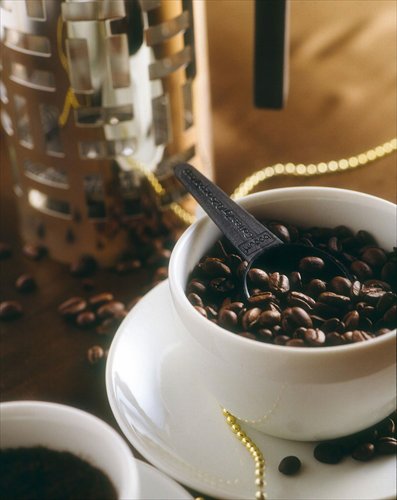HOME >> BUSINESS, METRO BEIJING
Singtex turns coffee into clothing
Source:Global Times Published: 2015-1-5 19:18:01

Only a tiny fraction of coffee grounds are used to make coffee, and Singtex is recycling the rest. Photo: CFP
Textile innovation has increasingly become more creative as manufacturers pursue function and eco-friendliness. Companies are known to use paper, plastic, and even bamboo to create fabric, but a company from Taiwan is taking one of today's most popular caffeinated beverages and turning it into garments: coffee.Taiwan leader Ma Ying-jeou visited Taiwan-based textile producer Singtex in December 2014 to praise the company's use of innovative technology that incorporates recycled coffee grounds into fabric. Ma revealed that some of his own clothes were from the Singtex factory, but this high tribute was just one example of their success. The company's list of international clients includes Victoria's Secret, Nike, Puma and New Balance.
Singtex's research team began exploring how to use coffee in textiles in 2005 after its founder Jason Chen and his wife noticed that Starbucks was using coffee grounds for odor control in its kitchen. They realized that the same technique could be used for fabric.
After four and a half years of research and millions of US dollars in investment, Singtex eventually established that coffee grounds could be incorporated into textile fibers to help control odor. This technology, named S.Café, also allows fabrics to have UV (ultraviolet) protection and dry quickly.
Ten million people drink coffee daily, but while making coffee, only 0.2 percent of the coffee grounds are used while the rest are thrown away, according to a report in the Global Entrepreneur magazine. The Singtex team thus collected these grounds from stores near their office and their homes when embarking on their mission to establish the eco-friendly coffee-based fabric.
Singtex uses a clean and low-carbon emission process to extract the oil from recycled coffee grounds. Because the materials and manufacturing process are environmentally friendly, the company has managed to meet a Bluesign standard, which is an emerging standard for environmental health and safety in the manufacturing of textiles.
However, meeting environmentally friendly standards is not enough to guarantee Singtex's success in the competitive market. One major factor of success lies in cost control, where the cost of clothes made with S.Café technology are only about 20 to 30 percent higher than those made of ordinary textiles. Adding about 35 percent of S.Café fabric in each garment is sufficient for making it equipped to control odor.
In 2013, the company upgraded its S.Café technology, bringing about more fabric choices for functional wear, such as yoga and jogging apparel. Now, Singtex uses recycled plastic bottles and spent coffee grounds to create insulation which does not only control odor, but is also breathable, wind-resistant, water-resistant, compressible, and thermally efficient. Singtex's technology enables them to make one insulated coat by using three cups of coffee grounds and 12.5 plastic bottles.
Singtex has obtained dozens of patents on their textile innovative technology from several countries and regions. They plan to expand their factories from Taiwan to the Chinese mainland, where the textile manufacturing technology has matured and the production cost is lower.
Posted in: Press Release, Enterprise